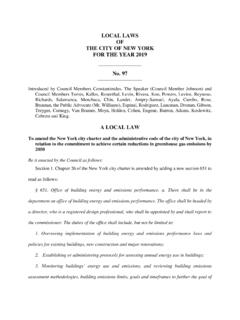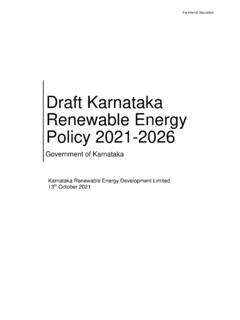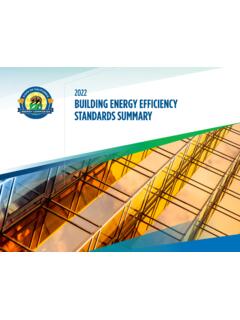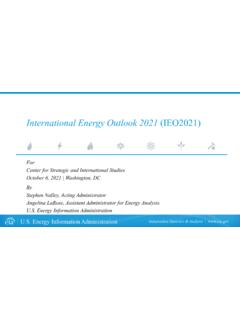Transcription of The Electric Power Industry in Japan 2020 - JEPIC
1 The Electric Power Industry in Japan 2020. JEPIC . Japan Electric Power Information Center, Inc. ( JEPIC ) marked Exchange and Cooperation Activities the 60th anniversary of our founding in May 2018. JEPIC is promoting information exchanges with the foreign Established in 1958 as a non-profit association of Japan 's Electric utilities and organizations in the Electric utility Electric utility Industry , our primary purpose is to meet the Industry by holding regular meetings, and taking part in increasing need for systematic and sustained exchange of international conferences and symposia.
2 Information with Electric utility industries around the world. In response to government policy , JEPIC also initiated International Cooperation technical cooperation programs for developing countries in With the support of the member companies, JEPIC . the field of Electric Power soon after our founding. These promotes integrated international cooperation programs programs remain one of our main activities today. for developing countries, mainly in Asia, for the purpose of improving Power infrastructure and nuclear Power safety in Research and Information Activities those countries and sharing of general information.
3 These JEPIC conducts research on the Electric Power Industry in programs include human resource development efforts foreign countries in light of situations and issues faced by such as seminars that JEPIC coordinates. JEPIC both receives the Industry in Japan today. We provide information from the participants of these seminars to Japan and dispatches those studies in various ways to contribute to the Industry experts to their countries. Including these seminar worldwide. JEPIC also works to enhance cooperation with programs, JEPIC carries out the following tasks: foreign Electric utilities and other related organizations.
4 Cooperation with Electric utilities in ASEAN countries Technical cooperation under ODA programs Technical cooperation for nuclear Power safety Contents Executive Summary 3. I. Structure of the Electric Power Industry 5. II. Energy policy 10. III. Supply and Demand 24. IV. Supply Structure 31. V. Retail Business and Trading Markets 44. Topics 54. Statistical Data 59. Overseas Activities of Member Companies 63. The Electric Power Industry in Japan 2020. Utility category Utility name Electricity transmission utilities J- Power . Japan Atomic Power Co. Electricity generation utilities New entrants Former general electricity utilities Hokkaido Electric Power Co.
5 General electricity transmission Tohoku Electric Power Co. and distribution utilities Tokyo Electric Power Company Holdings Chubu Electric Power Co. Hokuriku Electric Power Co. Kansai Electric Power Co. Chugoku Electric Power Co. Shikoku Electric Power Co. Kyushu Electric Power Co. Electricity retailers Okinawa Electric Power Co. New entrants 2. Executive Summary Executive Summary I. Structure of the Electric Power Industry Liberalization of entry to the Power generation sector commenced in 1995 at a time when generation and transmission were integrated along regional lines under 10 general Electric utilities.
6 Liberalization of the retail supply of electricity to all except low-voltage customers was then implemented in stages between 2000 and 2005. policy on reform of the electricity system was adopted in April 2013, and in the first phase of reform, the Organization for Cross-regional Coordination of Transmission Operators (OCCTO) was established in April 2015. In the second phase, the Electricity Market Surveillance Commission (now called the Electricity and Gas Market Surveillance Commission) was established in September 2015 to strengthen oversight of the liberalized Electric Power market.
7 Liberalization of the Electric Power retailing and generation sectors was completed in April 2016. In the third phase, legal separation of transmission and distribution from vertically integrated businesses is scheduled to be implemented in April 2020. Meanwhile, plans to abolish regulated electricity rates in April 2020 have been put on the back burner. II. Energy policy Under the philosophy of 3E+S (energy security, economic efficiency, and environment plus safety), the electricity sector aims to achieve a more balanced Power generation mix by improving the efficiency of thermal Power plants, reducing dependence on nuclear Power , and expanding use of renewables.
8 As of the end of August 2019, 15 nuclear reactors have been declared compliant with the new regulatory standards and granted permission to have their installation licenses amended accordingly. Nine of these have already reentered commercial service. The remaining six reactors that have been confirmed compliant and a further 21 reactors that are currently shut down or under construction are expected to eventually start or restart operation. Japan 's remaining 24 reactors have been earmarked for decommissioning, including the reactors involved in the accident at Fukushima Daiichi Power Plant.
9 Installed capacity of renewables (especially solar ) increased as the result of a feed-in tariff (FIT) scheme. The government is considering completely overhauling the FIT scheme by the end of fiscal 2020. Meanwhile, competition for customers is hotting up as electricity retailers respond to the progressive termination of purchase periods from November 2019 by offering a variety of purchase price plans. In June 2019, the Japanese government submitted a long-term strategy for reducing emissions to the UN Secretariat, setting a concrete target of achieving an 80% reduction in greenhouse gas emissions by 2050.
10 It calls for innovation coupled with a virtuous circle of environmental and economic growth to solve environmental issues. 3. The Electric Power Industry in Japan 2020. III. Supply and Demand In fiscal 2017, electricity demand in Japan was 977 TWh and peak national demand came to 156 GW. In fiscal 2017, Electric Power generated in Japan came to 1,007 TWh, of which 16 TWh was generated by solar Power and 6 TWh by wind Power . IV. Supply Structure Total generating capacity in Japan came to 306 GW at the end of fiscal 2018. This consisted of 161 GW of thermal Power , 49 GW of hydro Power , 57 GW of renewables (excluding hydro), and 38 GW of nuclear Power .









